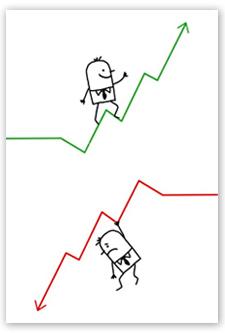 Why Investing in Great Service Actually Saves You Money
Why Investing in Great Service Actually Saves You Money
What is your slice of the $83 billion?
A recent study, conducted via collaboration between Genesys, Research firm, Greenfield Online and Datamonitor/Ovum analysts, set out to measure the impact of lost business due to customer service. The result was "The Cost of Poor Customer Service: The Economic Impact of the Customer Experience."
The report offers an in depth look at the cost of bad customer service in the U.S and estimates that business lose $83 billion each year due to a poor experience. In addition, nearly two-thirds of consumers report that they have ended a relationship due to customer service alone. What's more disturbing is that 61% of survey participants said that when they end a relationship, they take their business to a competitor.
If poor service is costing the average US Enterprises $83 billion, what does that mean for your company? What is your slice of that $83 billion?
How employees are served affects how customers are served.
Let's begin by understanding that customer service is the transactional relationship that a company has with its customers, and is the end result of how employees are served within an organization. We know that when employees enjoy their work and their organization, they are more likely to better serve their customer.
Preparing all levels of employees for that service transaction, from process improvement, to learning and development, to timely and consistent communication can be a fairly significant line item on a company expense sheet. Measuring and improving the customer experience also takes time, effort, and resource allocation. But, have you considered what it is costing your company if you're NOT offering adequate resources for employee preparation, and therefore underserving your customer?
What is customer service costing you now?
Employees – throughout all levels of the organization – that are not provided knowledge, resources, and support are ill-prepared to exceed or even meet customer expectations. In fact, it is disengaged, ill-prepared employees that fuel the fire of dire service. Do you know how much time and resources are spent in your organization on service recovery efforts and responding to customer complaints? Alternatively, how would your organization benefit if you were only responding to compliments?
Before your next budget review meeting, rather than considering how much a service development program might cost, add up what service, good or bad, is costing you now. Making up for poor experiences drastically outweighs the cost of investing in the delivery of great ones.
How much are you spending on service recovery issues?
- Time: For every poor experience, employees must research the problem, determine the solution, and then communicate the outcome to the customer. This type of service recovery saps valuable labor hours, time that could be spent delighting customers!
- Freebies: Consider all of the merchandise, products, and service you need to give away to resolve poor experiences. These costs slash profit margins and don't always result in customer loyalty.
- Every Customer Counts: Trying to satisfy a complaining customer may take time, but at least the complaining customer still trusts you. By complaining they are saying that they expect you to do the right thing. What about those customers who are apathetic and simply take their business elsewhere because of a poor experience? Remember, it costs about five times as much to attract a new customer as it costs to keep an old one.
For every poor experience, customers will tell 16 people.
In the 2011 American Express Global Customer Service Barometer, Americans say they tell an average of nine people about good experiences, and nearly twice as many (16 people) about poor ones. This illustrates the importance of making every individual service interaction important for businesses. The same study also reports that seven in ten Americans (70%) are willing to spend an average of 13% more with companies they believe provide excellent customer service.
Here is the $83 billion question: "Is your business among those that are losing money because of poor experiences or one that is reaping profitable rewards because of great ones?"
For more information on our strategies for creating great experiences, please see our Solutions page.
For more information on how CSE can help your organization reap profitable rewards from great experiences, please contact Holly Buckner.
